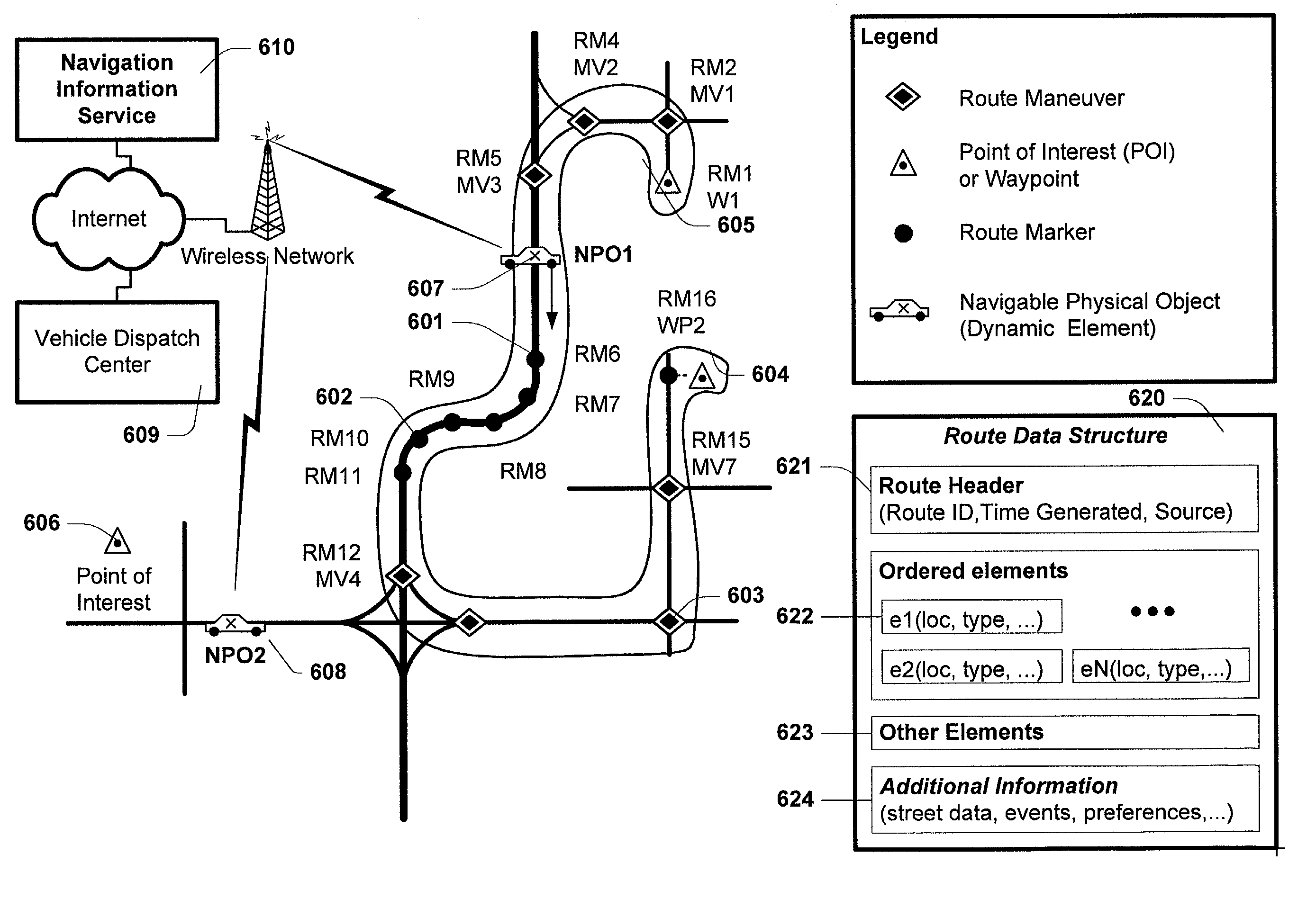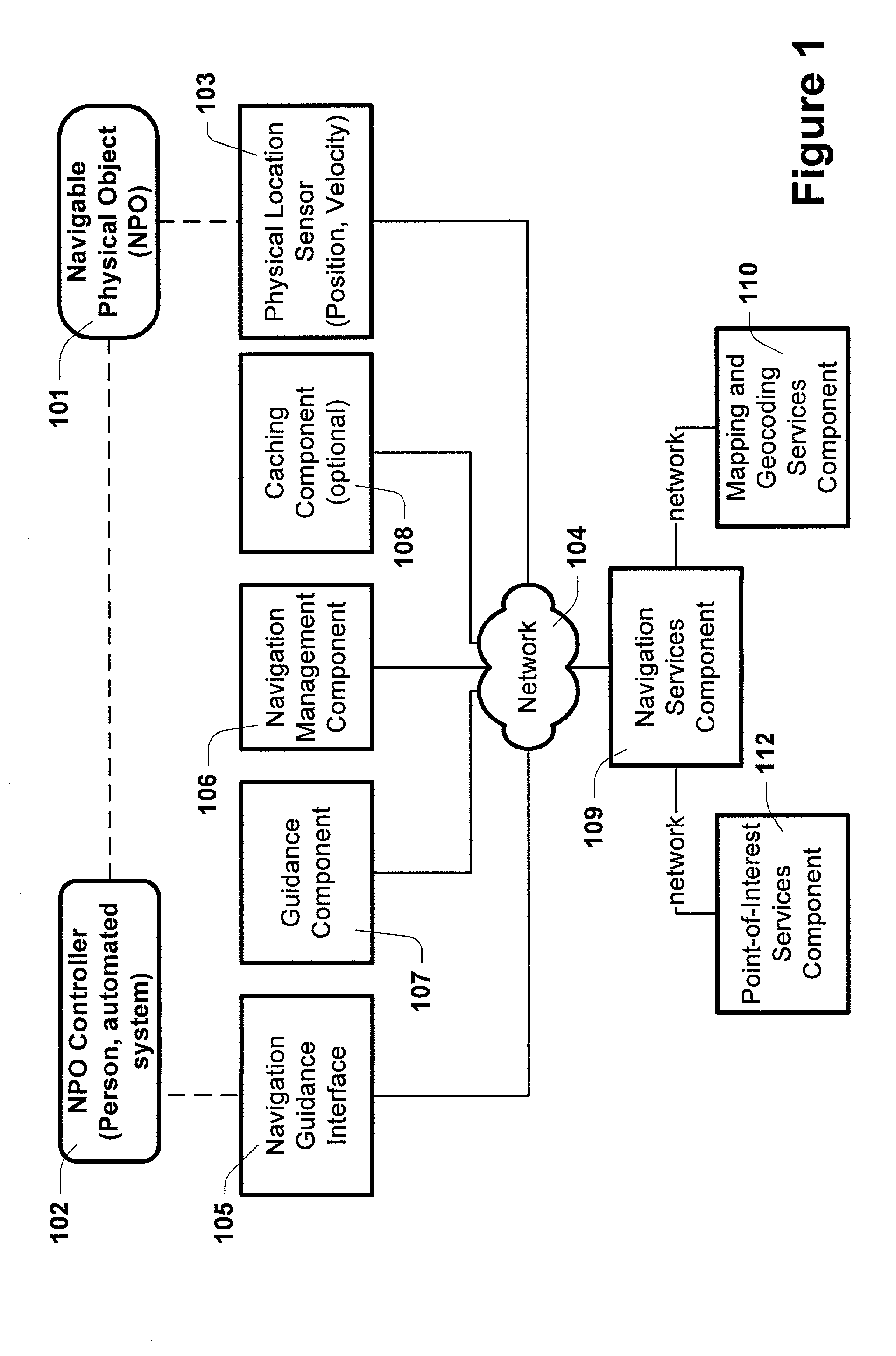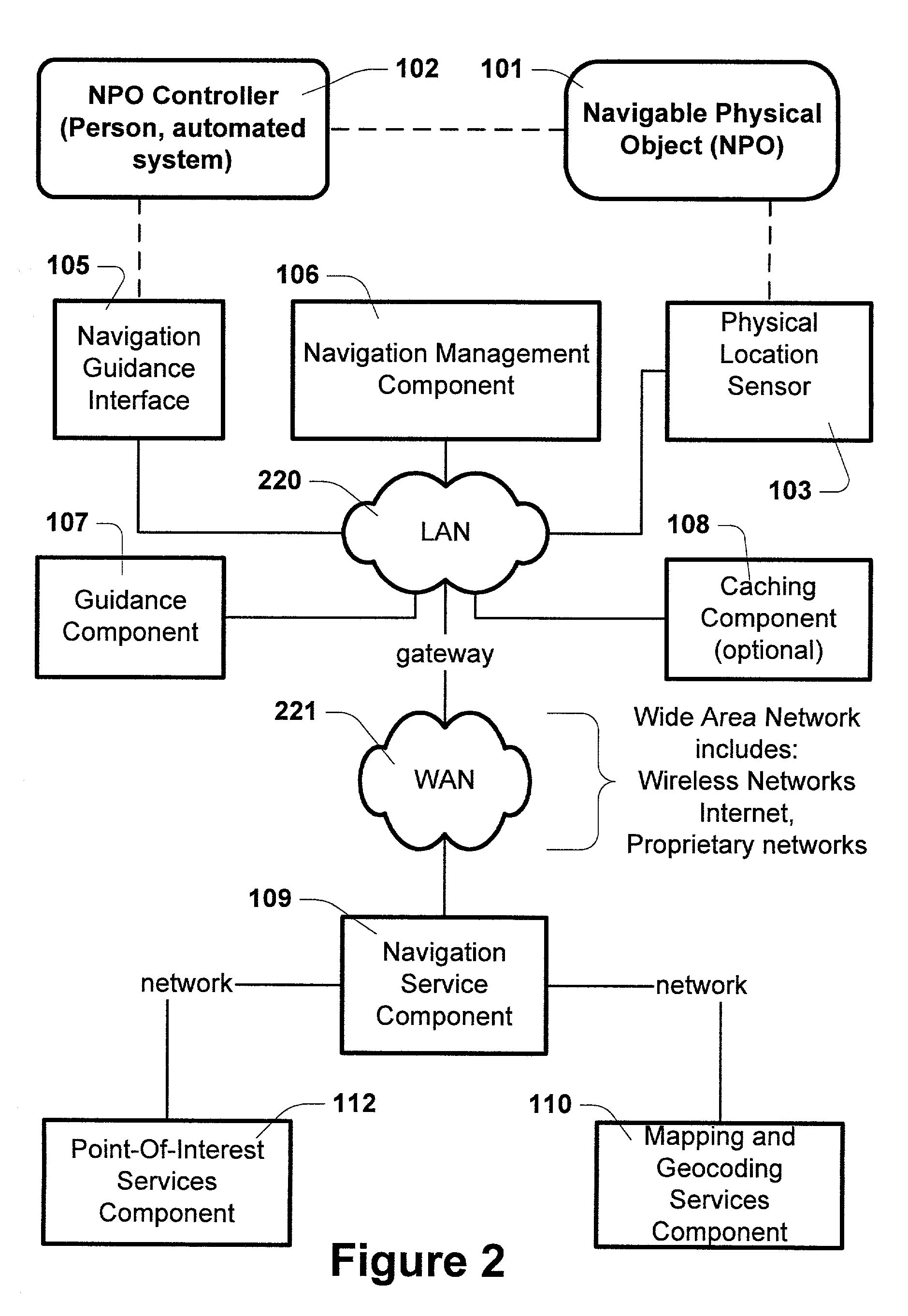Method and system for distributed navigation and automated guidance
a distributed navigation and automated guidance technology, applied in surveying, navigation, instruments, etc., can solve the problems of slow development of standard equipment, limited by the currency of information, and the need to have all map and geographic information integrated, so as to achieve the effect of reducing network transactions
- Summary
- Abstract
- Description
- Claims
- Application Information
AI Technical Summary
Benefits of technology
Problems solved by technology
Method used
Image
Examples
Embodiment Construction
[0033]The present invention provides distributed navigation and automated route guidance using a plurality of networked computing devices, in which a computing device may host one or more navigation functional components. The physical location of a navigable physical object (NPO) is sensed and communicated to one or more associated navigation components using a data network, wherein the navigation components perform their designated function for the purposes of providing guidance information to an NPO controller. An NPO controller directs the movement of an NPO and uses guidance information to keep the NPO on a specified route. Types of NPO controllers include human or electronic devices capable of interpreting guidance information. The NPO controller interacts with the distributed navigation system through a navigation guidance interface, which provides the appropriate presentation of guidance information and functions for the particular type of NPO controller (e.g., human-machine ...
PUM
 Login to View More
Login to View More Abstract
Description
Claims
Application Information
 Login to View More
Login to View More - R&D
- Intellectual Property
- Life Sciences
- Materials
- Tech Scout
- Unparalleled Data Quality
- Higher Quality Content
- 60% Fewer Hallucinations
Browse by: Latest US Patents, China's latest patents, Technical Efficacy Thesaurus, Application Domain, Technology Topic, Popular Technical Reports.
© 2025 PatSnap. All rights reserved.Legal|Privacy policy|Modern Slavery Act Transparency Statement|Sitemap|About US| Contact US: help@patsnap.com



